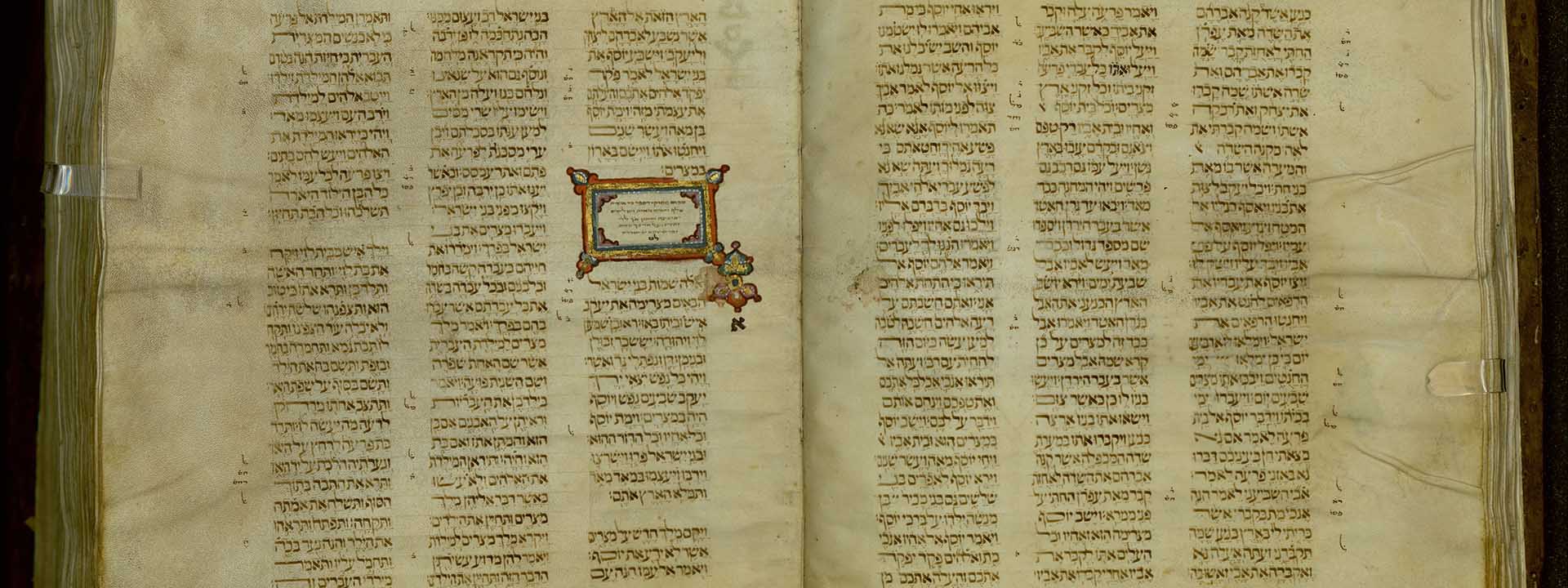Description
Bible with vocalization, accentuation, Masorah Magna and Masorah Parva
Manuscript. Burgos, Spain, 1260. Parchment. 428 fols. 305x270 mm. Sephardi square script. Three columns per page (Proverbs, Job and Psalms in two columns).
The manuscript reached Damascus at an unknown date – hence the appellation "Keter Damesek” ("Crown of Damascus"). There it was kept in the synagogue of Hushbasha Al'anabi, and viewed by Alexander E. Harkavy in 1886 and Avinoam Yellin in 1919.
The colophon (426v) reads: "I, Menahem, son of Abraham ibn Malek, may his soul, rest in peace, wrote these twenty four [books] for the dear honored… Isaac, son of the honored sage Abraham ... Haddad, and completed them on Monday, the 17th day of the month of Adar in the year 5020 in Burgos ... ".
The Masorah Magna is written in micrographic ornamentations and also on colored "carpet" pages, the contours of which form a combination of floral motifs and geometric forms.
The books of the Pentateuch and the Prophets are arranged in the conventional order. The Hagiographa, however, deviates from the conventional order and from that noted in Tractate Baba Bathra (14b). It is arranged as follows: Chronicles, Ruth, Psalms, Job, Proverbs, The Song of Songs, Ecclesiastes, Lamentations, Esther, Daniel, Ezra and Nehemiah.
The beginnings of sedarim and parashiyyot are ornamented in gold and other colors (137r, 153v, 248r, 252v).
A note of ownership (427r) may indicate Karaite ownership.
Auctioned at Sotheby's, London, in 1962, the manuscript was acquired for the Library through the generosity of the America-Israel Cultural Fund and Mr. N.Z. Williams of Jerusalem.


